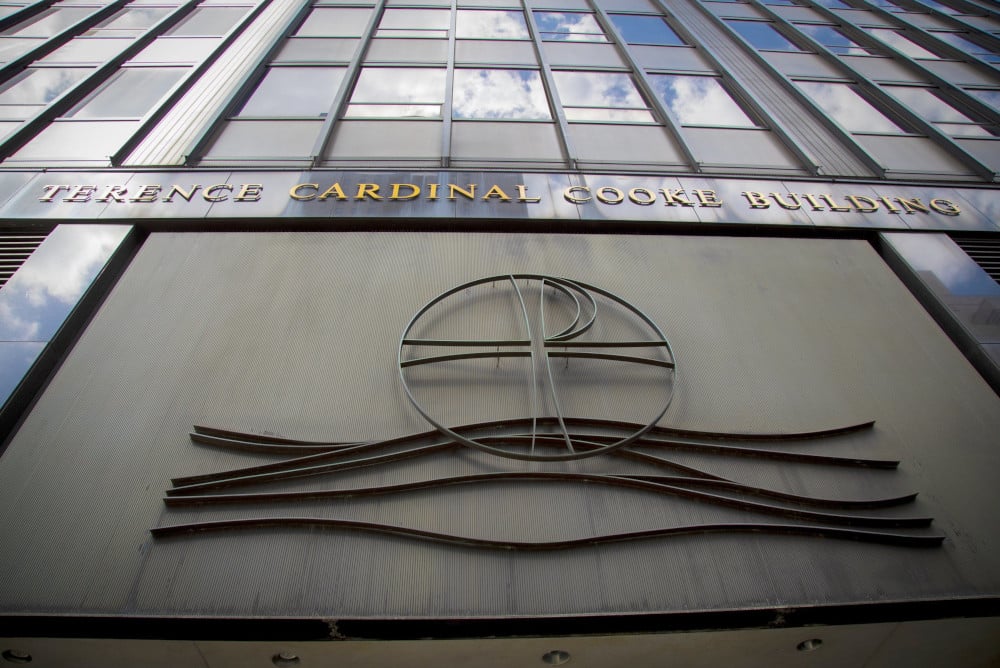
After the Archdiocese of New York’s Feb. 15 announcement it would close 12 elementary schools and merge four others into two, Superintendent of Schools Michael J. Deegan unveiled to OSV News a Catholic educational pilot program that offers new hope to entire communities.
A Catholic education and family center will open at St. Philip Neri parish in the Bronx, which is not directly affected by the closings. Deegan said under the new plan, « the parish and school will become the epicenter of pastoral care for the parish and surrounding parishes. »
« In addition to improved academics in the school, we will have more robust religious education and an after-school program that is not just babysitting, but will include music, athletics, arts and dance, » he said.
The program will be open to students in the parochial school as well as school-age children throughout the community, he said.
In addition, other archdiocesan offices « are planning programs, presence and services that will take place on the parish campus, » Deegan said. These include the offices of family life, youth ministry, faith formation and Hispanic affairs.
Catholic Charities will help with housing and job placement, among other services. Archcare, the archdiocesan health component, will offer programs to support mental health and general well-being, he said.
« We recognize that schools need to be more than simply educational institutions, » he said.
After the pilot program, future iterations of the Catholic education and family center model will be established in other parishes that have schools, as well as those whose school buildings are being used by the charter schools or parish religious education programs, Deegan said.
The pilot grew out of a strategic planning process that ultimately led to the decision to close and merge schools this year for the future benefit of the Catholic school system, Deegan said.
Deegan said closing the schools is « devastating to us after decades of building them up to make them exemplary Catholic schools. »
He cited strong academics including rising test scores that outpace those of public and most charter schools in New York City. He said catechesis and faith formation in the schools prepare the next generation of Catholics.
It is particularly heartbreaking when the factors affecting the decision to close schools are largely beyond the control of the archdiocese, Deegan said. Namely, relocation of people away from Manhattan during the pandemic and high unemployment rates in the Bronx challenged the financial viability of the schools, especially in those two boroughs.
Fifteen of the schools affected by the upcoming closings and mergers are in Manhattan and the Bronx. One is in Staten Island. The archdiocese operates schools in nine of the 10 counties it covers. The Feb. 15 announcement affects approximately 5% of students in the archdiocesan school system.
Deegan said the archdiocese invests $45 million in its educational ministry each year and no student pays the full cost of education. Students in regionally administered schools are subsidized by approximately $4,000 each year. Those in parish schools may receive direct subsidies from the parish and many students get financial assistance or scholarships from a plethora of charitable entities in the archdiocese.
Despite vigorous fundraising from generous donors, « we fell short and families couldn’t afford to stay, » Deegan said. « We couldn’t surpass the funding we’re already giving, » he added.
The schools of the archdiocese weathered the pandemic and reopened earlier than others. Schools in some areas benefited from a bump in enrollment. Nonetheless, Deegan said they began a strategic planning process in the spring of 2021 to « take a deeper look at what we do and strengthen Catholic education in the archdiocese. »
The superintendent hired Bellwether, an educational consulting firm. Deegan said the group conducted surveys and in-person conversations with « hundreds of people, » collected extensive demographic information, assessed facilities and did market research. The school closings and mergers were the most immediately visible outcome of the lengthy process.
The planning process also addressed the transition from elementary schools to high schools in the archdiocese. Deegan said there is an effort to align education at both levels by expanding Catholic middle schools for grades 6-8. Students in those schools will benefit from sharing laboratory and athletic facilities with high schools, he said.
« We’ve had great academic success, but we’re never satisfied with our progress, » Deegan said. His schools have adopted the National Standards and Benchmarks for Effective Catholic Elementary and Secondary Schools, or NESBECS, created by the National Catholic Education Association. The standards cover mission and Catholic identity, governance and leadership, academic excellence and operational vitality.
« We measure everything we do against these benchmarks, » he said, « so every school will be the exemplary Catholic school it should be. »